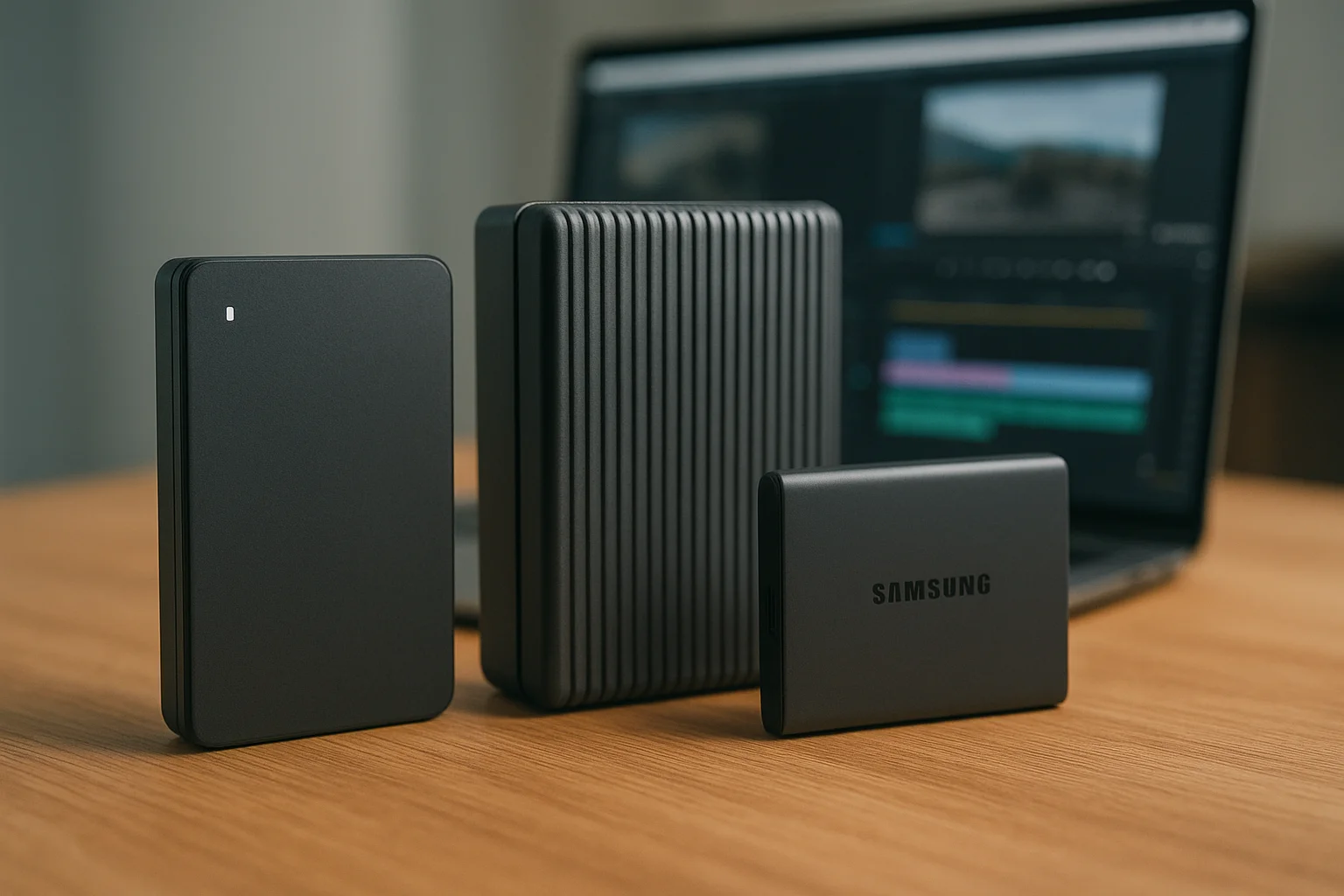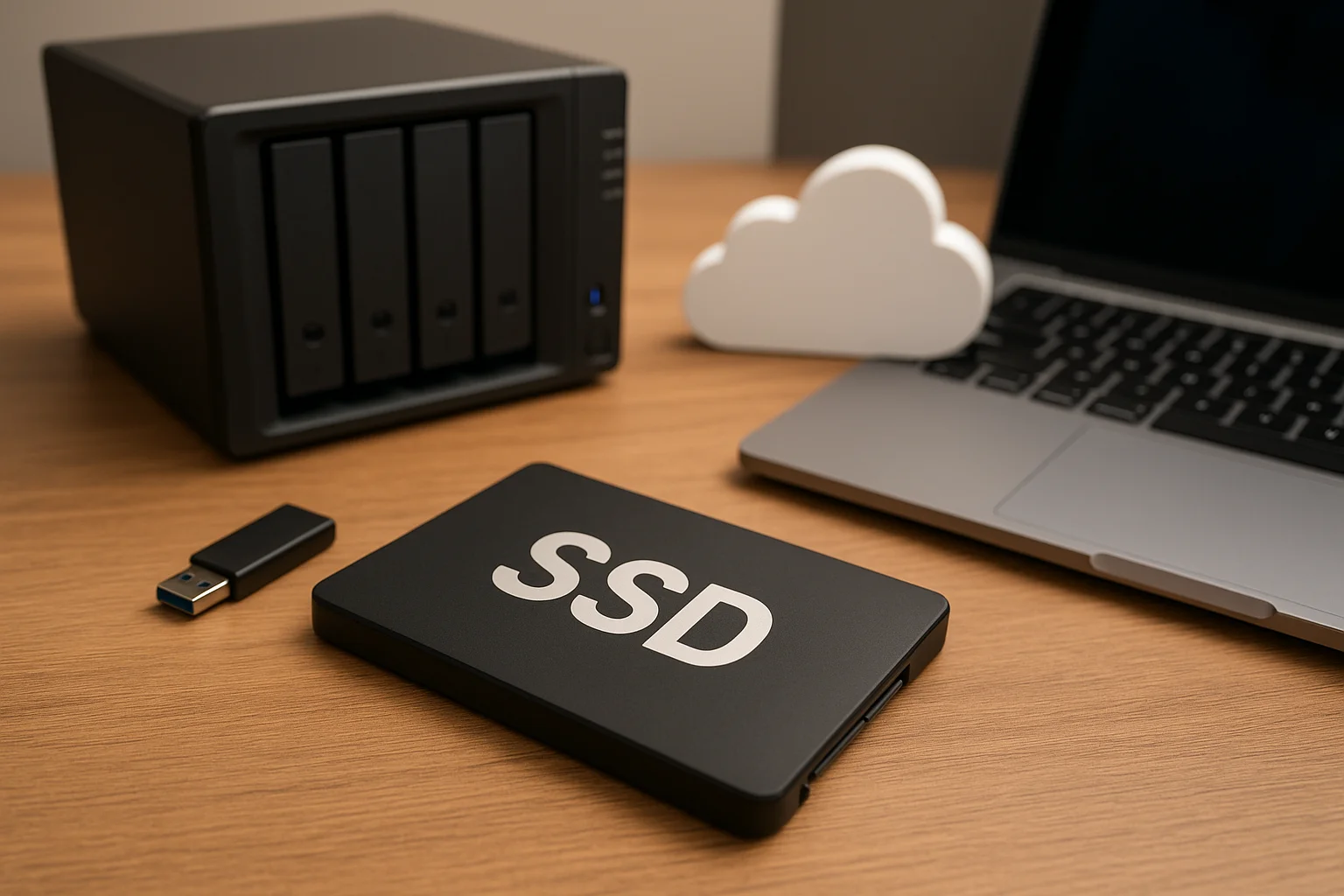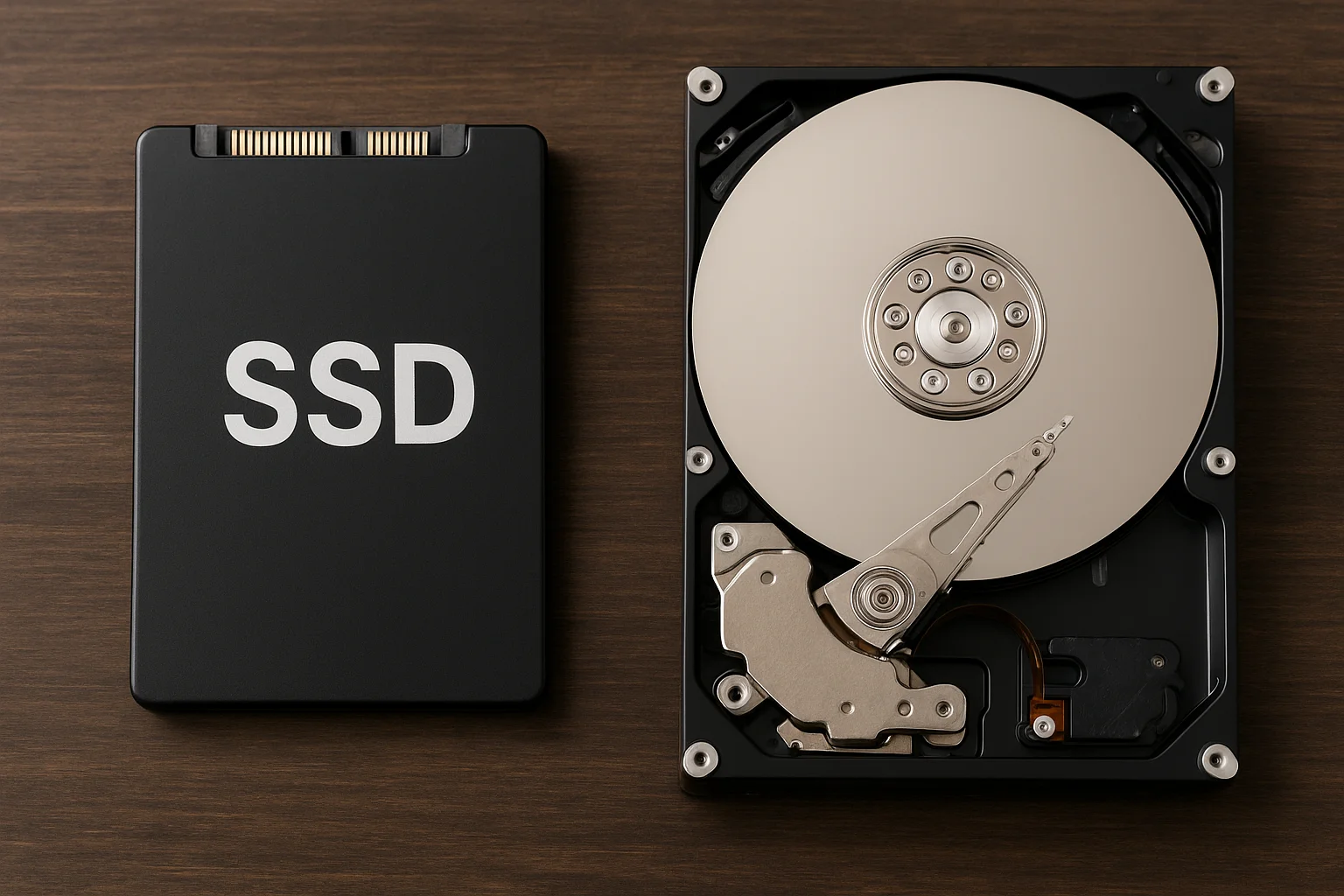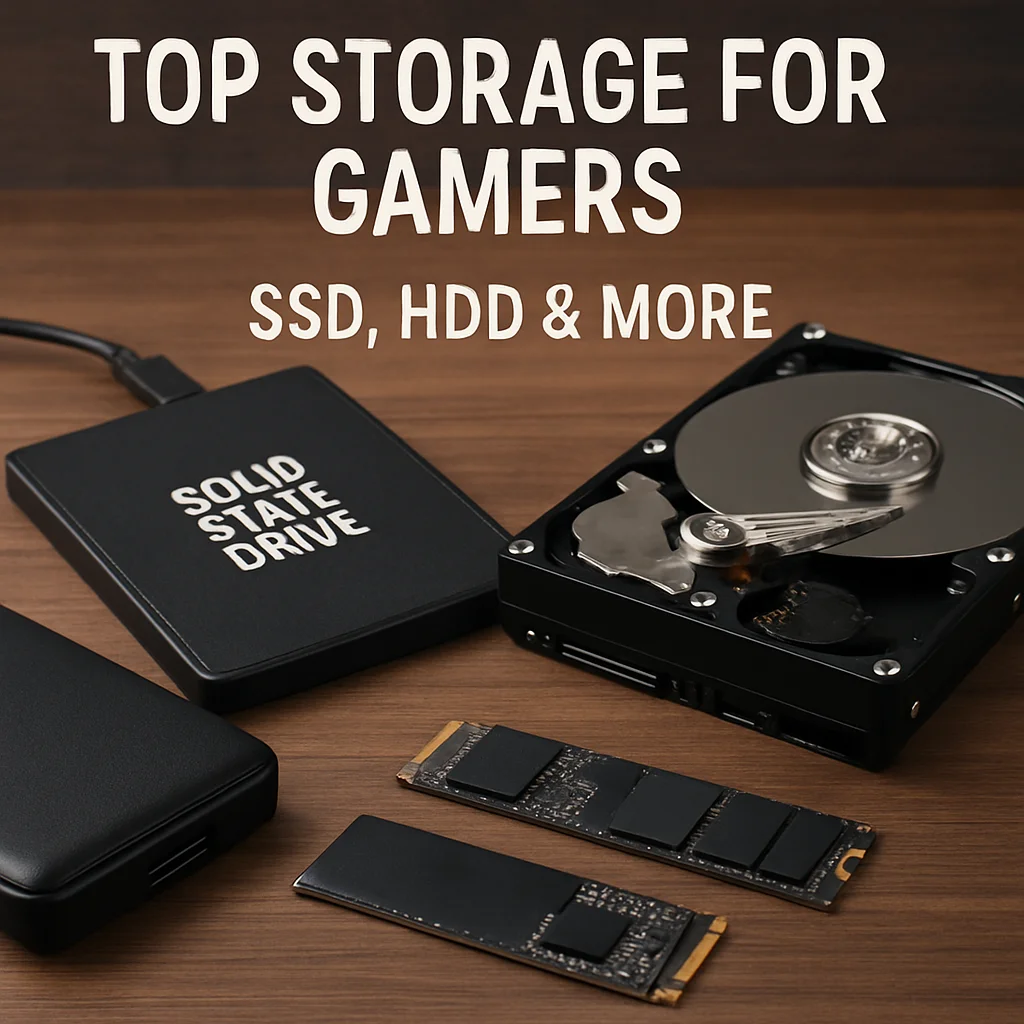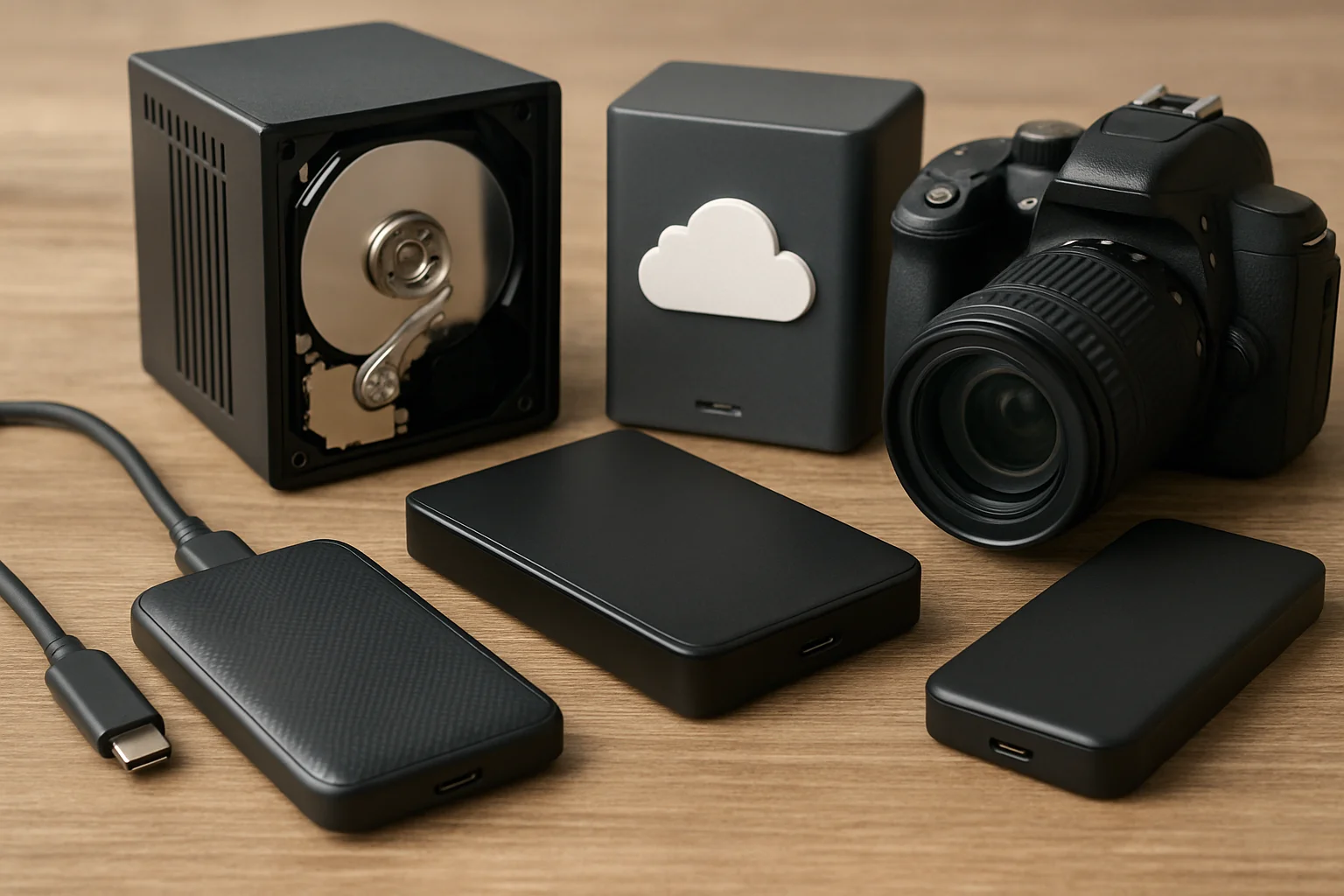Why External Drives Matter for Video Editors
Video editing is a demanding task that requires handling large media files and maintaining a smooth workflow. Relying solely on an internal drive can quickly become a bottleneck, especially when working with 4K, 6K, or 8K footage. External drives provide the necessary speed and capacity to keep projects running efficiently.
One of the main advantages of external drives is their ability to free up your computer's internal storage. Video files are typically enormous, and editing directly from a full internal drive can slow down rendering times, playback, and overall system performance. By offloading projects to an external drive, editors can ensure their system remains responsive.
Another critical factor is data organization and portability. External drives allow editors to maintain separate libraries for different projects, making it easier to locate files quickly. Additionally, they can be easily transported between workstations, making collaboration with other editors or working from multiple locations seamless.
Speed is also a defining feature for external drives used in video editing. Drives with fast read/write speeds, such as high-end SSDs or drives using Thunderbolt 3/4, drastically reduce load times and enable real-time editing without lag. Even high-capacity HDDs are valuable when the priority is storing extensive archives without compromising reliability.
Finally, external drives offer an extra layer of data protection. Using them in combination with backup strategies ensures that projects are safeguarded against hardware failures or accidental deletion. For video editors, protecting creative work is as important as creating it.
Key Factors to Consider: Speed, Capacity, and Reliability
When selecting an external drive for video editing, understanding the core performance metrics is essential. The three most critical factors to evaluate are speed, capacity, and reliability, as each directly impacts your workflow and the safety of your projects.
Speed determines how quickly your drive can read and write data. High-speed drives, particularly NVMe SSDs or Thunderbolt-enabled models, allow editors to work with large video files without experiencing laggy playback or long render times. Even the fastest drives have different performance levels depending on sequential and random read/write speeds, which can affect real-time editing and exporting.
Capacity is crucial for storing high-resolution footage. Projects in 4K or 8K can easily consume hundreds of gigabytes per video, so choosing a drive with ample storage prevents constant file juggling and ensures you can keep entire projects together. For long-term archival, larger HDDs may be more cost-effective, whereas SSDs offer a balance of speed and moderate capacity.
Reliability reflects the drive's durability and the likelihood of data loss. Drives from reputable manufacturers with features like shock resistance, error correction, and consistent performance over time are preferred. For video editors, even a single drive failure can result in significant setbacks, so investing in drives known for their stability is essential.
Other considerations include connection interface, which affects both speed and compatibility, and heat management, since prolonged video editing sessions can cause drives to overheat and throttle performance. Evaluating these factors together helps editors choose a drive that meets both immediate project needs and long-term storage requirements.
SSD vs HDD: Which Storage Type Works Best for Video Editing?
Choosing between an SSD (Solid State Drive) and an HDD (Hard Disk Drive) is one of the most important decisions for video editors. Each type has its own strengths and weaknesses, and understanding them helps editors optimize both speed and storage capacity.
SSDs use flash memory with no moving parts, which provides faster read/write speeds, lower latency, and superior reliability under heavy workloads. This makes them ideal for editing high-resolution footage in real-time, working with multiple video tracks, and running complex timelines without dropped frames. They are also more resistant to physical shock, which is particularly valuable for portable setups.
HDDs, on the other hand, rely on spinning magnetic platters. They offer higher storage capacities at a lower cost per gigabyte, making them well-suited for archiving large projects or storing raw footage that does not require constant access. While HDDs are slower than SSDs, they remain a practical choice for long-term backups or projects where ultra-fast access is not critical.
When deciding between the two, editors often adopt a hybrid workflow: using an SSD for active projects to benefit from fast editing and rendering, while using an HDD for storing completed projects, media libraries, or backup copies. This approach balances performance and cost-efficiency without compromising workflow.
Other considerations include drive interface and form factor. SSDs with NVMe over Thunderbolt connections provide top-tier speeds, while larger HDDs connected via USB 3.2 or Thunderbolt are optimal for capacity-driven storage. By aligning the choice of drive with specific project needs, video editors can ensure both speed and storage reliability.
Thunderbolt vs USB-C: Connecting for Maximum Performance
For video editors, the choice of connection interface can significantly impact both transfer speeds and overall workflow efficiency. Two of the most popular options today are Thunderbolt and USB-C, each with unique capabilities and limitations.
Thunderbolt offers some of the fastest speeds available, with Thunderbolt 3 and 4 supporting up to 40 Gbps. This allows editors to work directly from external drives with minimal latency, even when handling 4K, 6K, or 8K video. Thunderbolt also supports daisy-chaining multiple devices, which is useful when connecting multiple drives, displays, or peripherals without sacrificing speed.
USB-C is more widely adopted and can deliver impressive speeds, particularly with USB 3.2 Gen 2x2 or later standards, offering up to 20 Gbps. While not as fast as Thunderbolt, USB-C provides excellent compatibility across PCs, laptops, and other devices. For many editors, USB-C is sufficient for high-resolution editing when paired with a high-performance SSD.
Another consideration is latency and power delivery. Thunderbolt drives often consume less CPU overhead and provide more stable data transfers, which can improve editing responsiveness. Many USB-C drives, however, now include enhanced features like UASP (USB Attached SCSI Protocol) to improve performance and efficiency, narrowing the gap with Thunderbolt in practical use cases.
Choosing the right interface also depends on your setup and workflow. Thunderbolt is ideal for editors needing maximum speed for active projects, multi-stream timelines, or direct-from-drive editing. USB-C offers versatility and broad device support, making it a strong choice for portable editing setups or secondary storage where top-tier speed is less critical.
